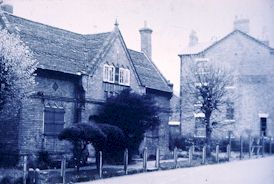



Beeston Pubs, Inns, etc
|
Year |
Pubs,
etc |
Approx
Population |
|
Per
Pub |
Source: Census & Directories
|

© David Hallam - 2005-2025
|
Inns & Pubs in Beeston -
Many of the public houses in present-day Beeston can be traced to origins in the nineteenth century and some
even earlier - although most of the buildings we see today are rebuilds of original premises using the name or
have been heavily modified.
Before 1830 the number of places available for drinking in Beeston was fairly normal in proportion to the
population of the day. Pigotts Directory of Nottinghamshire of 1828 lists three in Beeston - the Three Horseshoes,
the White Lion and another known as the Three Tuns. On the face of it, this list omits the Crown and the Star - both of
which are now located in buildings which clearly are from earlier than that date - it seems that possibly, either the listing is incomplete
or that one or more of those listed is an earlier name for one or more of those missing. On balance, we believe that both
possibilities apply - one pub, the Crown, is omitted because it was then operating as a brewery only and the the unknown Three Tuns
was later renamed - possibly as The Star. It is likely therefore, that the total number of drinking establishments in the village at that
time was three, a fairly reasonable ratio of 1 for every 800 in the community.
If that was a level of provision that was appropriate, it is difficult to believe what followed was ever sustainable. The Beerhouse Act of 1830
was designed to reduce spirits drinking by allowing the sale of beer, brewed by others, from private premises. This led, in Beeston as everywhere
else, to the opening of a number of less formal, initially unnamed beer-houses and changed the ratio of supply and demand completely over
the next decade so that, by 1841, there were 12 drinking places in Beeston - that is 1 for every 234 of the total population - including men, women
and children. As the table on the left shows, this gross over-provision continued, at least until the 1880s, even reaching a ratio of 1:200 at one
point and was little effected by the controls of 1869 when all drinking establishments were brought under the control of the Licencing
Justices - or, indeed, the rise locally of a Non-Conformist, anti-drink lobby. With the number of pubs, etc staying around the 16 mark
until well into the 20th century, it was really only the growth in population that made the balance more realistic, reaching over 1:800 by 1920.
 One casualty of a more regulated licencing regime and a more
determined public opinion, was the pub built on the south side of Middle Street, just to the east of Station Road, probably in the 1860s, by Thomas Dore
(See More). Apparently purpose-built as a pub and believed to have opened as the Rising Sun for a few years before
having its licence revoked in 1869 on the grounds of over-provision, it is shown on the right of the photograph on the left with its name painted on the side.
Because of its fate, it became known by the locals as "The Pub That Never Was" - although, it seems that this was not quite the case. It can be seen as the
older building, on the left of the photograph, on the site now occupied by Jessamine Court, was known as the Salvation Army House, presumably because that organisation
had some kind of involvement with it - and would have undoubtably have been another source of objection to the proposed additional drinking provision. One casualty of a more regulated licencing regime and a more
determined public opinion, was the pub built on the south side of Middle Street, just to the east of Station Road, probably in the 1860s, by Thomas Dore
(See More). Apparently purpose-built as a pub and believed to have opened as the Rising Sun for a few years before
having its licence revoked in 1869 on the grounds of over-provision, it is shown on the right of the photograph on the left with its name painted on the side.
Because of its fate, it became known by the locals as "The Pub That Never Was" - although, it seems that this was not quite the case. It can be seen as the
older building, on the left of the photograph, on the site now occupied by Jessamine Court, was known as the Salvation Army House, presumably because that organisation
had some kind of involvement with it - and would have undoubtably have been another source of objection to the proposed additional drinking provision.
On the next page you will find details of each of the pubs which have existed in Beeston in the last two centuries, most of which continue to serve today. Also available
is a page written by Grenville Chamberlain describing the interesting subject of Pub Checks which were issued by licenced premises in Beeston and another listing
licencees and landlords or the various Beeston pubs over the years,
Click Here to the Top of This Page
|
 |
 One casualty of a more regulated licencing regime and a more
determined public opinion, was the pub built on the south side of Middle Street, just to the east of Station Road, probably in the 1860s, by Thomas Dore
One casualty of a more regulated licencing regime and a more
determined public opinion, was the pub built on the south side of Middle Street, just to the east of Station Road, probably in the 1860s, by Thomas Dore